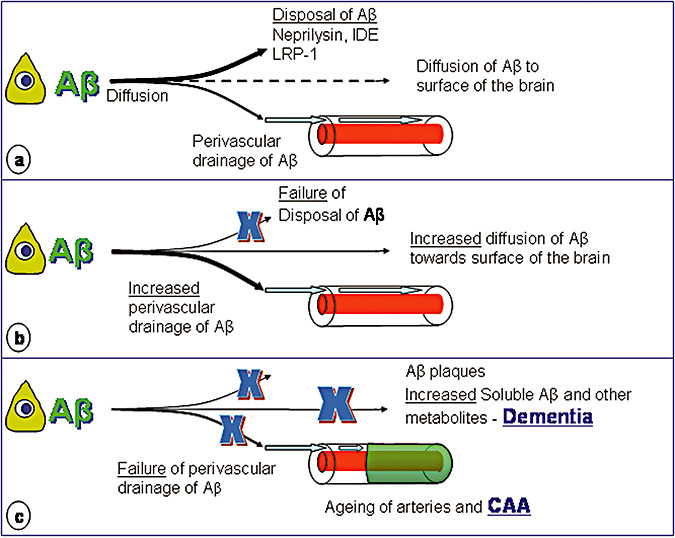Figure 8.

Failure of Elimination of amyloid‐β (Aβ) from the brain in Alzheimer's disease. A. In the normal young brain, Aβ is produced by neurons and other cells, diffuses through the extracellular spaces and is either degraded by neprilysin and insulin‐degrading enzyme (IDE) or absorbed into the blood via lipoprotein receptor‐related protein (LRP)‐1 mediated mechanisms. Some Aβ also drains with interstitial fluid along perivascular pathways in the walls of capillaries and arteries and a small proportion may diffuse toward the surface of the brain. B. With age disposal of Aβ by neprilysin, IDE and LRP‐1 mediated mechanisms fails and more Aβ is diverted to the perivascular drainage pathways. C. As arteries stiffen with age, perivascular drainage of Aβ becomes less efficient and ultimately fails because of blockage of the pathways by deposits of amyloid fibrils—cerebral amyloid angiopathy (CAA). Insoluble Aβ is deposited as plaques in the brain parenchyma and this interferes with diffusion of Aβ and other solutes through the extracellular spaces. Eventually, perivascular drainage fails and levels of soluble Aβ and other soluble metabolites in the brain rise and disturb homeostasis of the neuronal environment, resulting in neuronal malfunction, cognitive decline and dementia.
